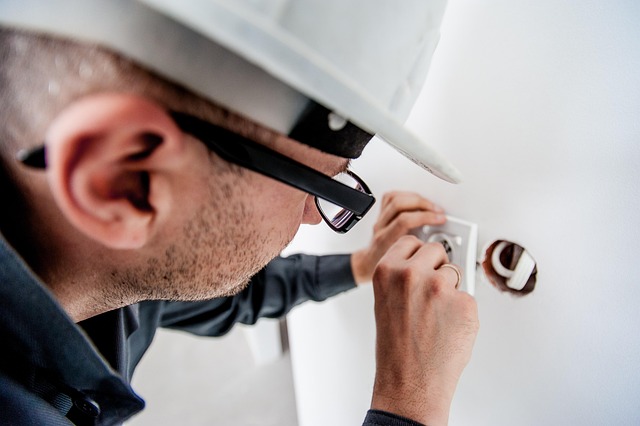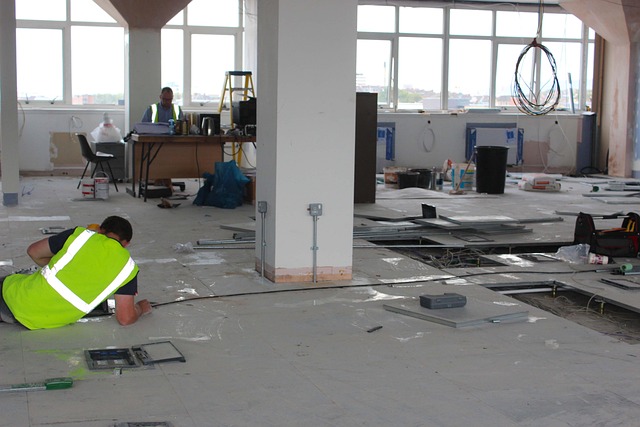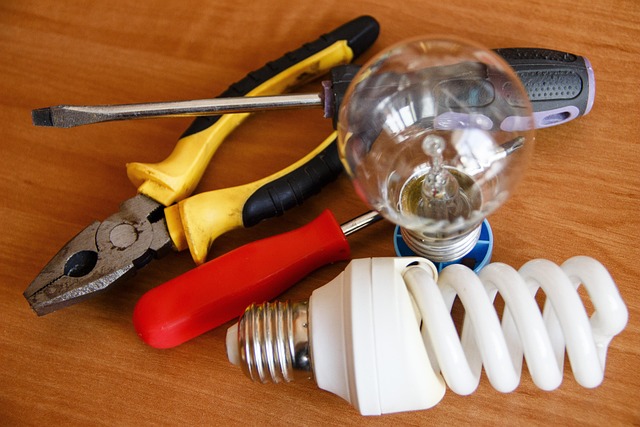Service panel upgrades by professionals like electricians are crucial for modern buildings as they handle power distribution, mitigate safety hazards, and support high-power equipment in commercial settings. Upgrades involve replacing old panels with larger models while maintaining safety standards, benefiting homeowners with enhanced efficiency, improved electrical safety, and seamless integration of new technologies. A systematic approach including needs assessment, safe deactivation, labeling wires, installing the new panel, testing, and following local codes is essential for successful upgrades.
Looking to enhance your home’s electrical system? Consider upgrading your service panel for increased capacity. This essential task, often requiring the expertise of a qualified electrician, opens up new possibilities for modern appliances and devices.
Learn about the limitations of service panels, explore the advantages of an upgrade, and follow a step-by-step guide to ensure a safe and efficient process. Maximize your home’s potential with these valuable insights tailored for both electricians and homeowners.
- Understanding Service Panels and Their Capacity Limitations
- Benefits of Upgrading for Electricians and Homeowners
- Step-by-Step Guide to Service Panel Upgrades
Understanding Service Panels and Their Capacity Limitations

Service panels, often overlooked yet critical components in any electrical system, play a pivotal role in distributing power to various circuits within a building. These panels act as control centers, managing the flow of electricity and ensuring each circuit operates efficiently. However, as businesses and homes demand more power for modern appliances and technologies, service panels can reach their capacity limits, leading to potential safety hazards and reduced performance.
Electricians often encounter this challenge when dealing with outdated buildings or those experiencing frequent power outages. Upgrading service panels is a strategic solution that involves replacing the existing panel with a larger, more capable model. This process increases the circuit breaker capacity, allowing for higher electrical loads while maintaining safety standards. Such upgrades are essential, especially in commercial settings where high-power equipment demands reliable and robust electrical infrastructure.
Benefits of Upgrading for Electricians and Homeowners

Upgrading service panels is a strategic move for both electricians and homeowners, offering numerous advantages that enhance electrical systems’ efficiency and safety. For electricians, this process presents an opportunity to showcase their expertise and provide clients with modern solutions tailored to their needs. By updating to newer, more capable panels, they can accommodate increased circuit demands, support advanced home technologies, and improve overall system reliability. This upgrade path ensures electricians remain competitive in a market where energy-efficient and smart home trends are on the rise.
Homeowners also reap significant benefits from this improvement. An upgraded service panel enhances electrical safety by incorporating modern safeguards, such as enhanced grounding and overcurrent protection. It allows for better management of high-wattage appliances and devices, ensuring smooth operation during peak usage times without triggering circuit breakers. Moreover, it opens up possibilities for home expansion or renovation projects, enabling homeowners to integrate new technologies seamlessly into their living spaces.
Step-by-Step Guide to Service Panel Upgrades

Upgrading your service panel is a crucial task for any electrician dealing with an overloaded or outdated electrical system. Here’s a step-by-step guide to ensure a smooth process:
1. Assess Your Needs: Begin by evaluating your current electrical load and future requirements. Identify the specific upgrades needed, such as increasing circuit breaker capacity or adding new outlets. A professional electrician can assist in this initial assessment.
2. Turn Off Power: Safety is paramount. Before beginning any work, turn off the main power supply to the panel at the main breaker or fuse box. Test the circuits to ensure they’re de-energized and check for any residual charge before proceeding.
3. Remove the Old Panel: Carefully take out the existing service panel, being mindful of wires and components connected to it. Label each wire for easy reinstallation later. This step often requires the removal of mounting brackets and screws securing the panel in place.
4. Install the New Panel: Place the new, upgraded service panel in the same location as the old one. Secure it with fresh hardware and make sure it’s firmly mounted to the electrical box or wall.
5. Reattach Wires: Reconnect all wires to their respective circuits, adhering to local electrical codes. Ensure proper grounding and use appropriate wire connectors for a secure and safe connection.
6. Test the System: After finishing the upgrade, turn on the main power supply and thoroughly test the system. Verify circuit breaker ratings, check for correct wiring, and ensure all devices operate as expected.
Upgrading your service panel is a smart move for any electrician or homeowner looking to future-proof their electrical system. By tackling this task, you’re not only increasing the capacity of your home’s power supply but also ensuring safer and more efficient energy distribution. This simple upgrade can open up new possibilities for expanding your electrical load, from adding more appliances to installing cutting-edge smart home technology. Remember, a professional electrician is key to successfully navigating this process, so don’t hesitate to reach out for expert assistance when making such improvements.
